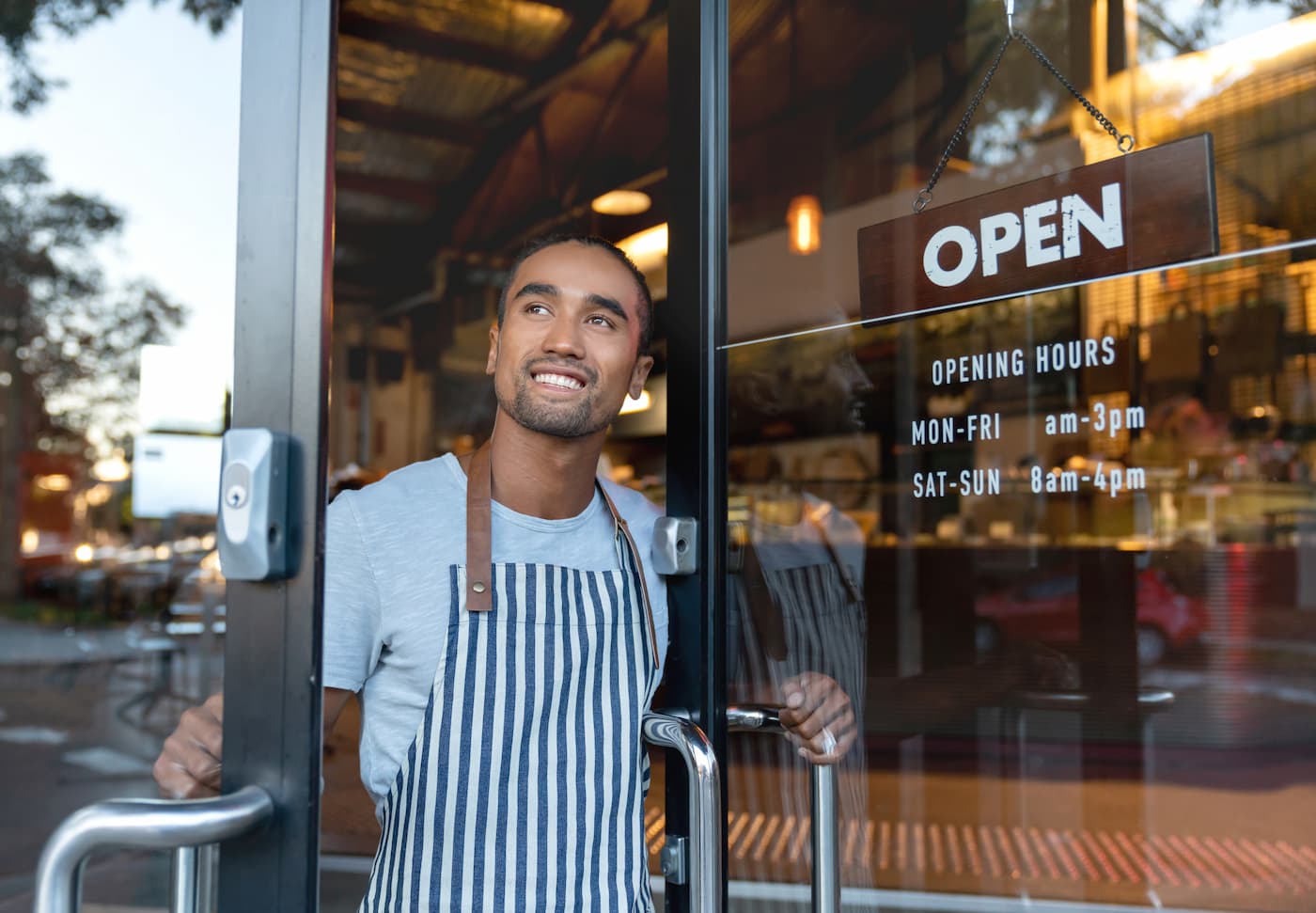The 15 most profitable restaurant businesses to start in 2025
Editorial Team
10 min read
Starting a restaurant can be an incredibly exciting venture with the potential for substantial rewards but it can be difficult to know which types are the most profitable and worth opening.
Luckily in 2025, the U.S. restaurant industry continues to evolve and is on the brink of passing a historical $1 trillion in sales, with certain business models standing out for their profitability.
Whether you’re interested in quick service or full service, this guide will help you navigate the 15 most profitable restaurant types to open in 2025 based on data.
Quick Service Restaurants (QSRs)
Quick Service Restaurants are usually characterized by their speed of service, convenience, and affordability, setting them apart from other restaurant models. They include a variety of formats such as fast food restaurants, food trucks, and smoothie bars, each catering to specific consumer needs with a focus on quick preparation and minimal wait times.
Their ability to offer quality food at competitive prices while maintaining high turnover rates make QSRs a lucrative and popular choice in the restaurant industry.
Here are some of the most profitable QSR restaurants to open in 2025:
1. Fast food restaurants
Fast food restaurants are some of the highest profit margin restaurant businesses to open due to their low operating costs and high customer demand.
Burgers, pizzas, and fried chicken are all some of the timeless favorites that drive consistent traffic and have historically high restaurant profit margins. This has positioned the fast food sector as a cornerstone within the quick service restaurant industry, which continually evolves with consumer preferences.
It is even estimated that fast food will experience a compound annual growth rate (CAGR) of 7.1% in 2024 alone, driven by the demand for quick, affordable meals. Additionally, QSR Magazine reports that technological advancements such as online ordering and delivery services are further enhancing profitability, making fast food restaurants a great choice for those looking to open a QSR this year.
2. Food trucks
Food trucks are a versatile and cost-effective entry point into the restaurant business that can act as a concept incubator. This can be especially helpful due to the fact that they typically require a fraction of the investment of starting a brick-and-mortar.
Food trucks can offer anything and everything from gourmet street food and fusion dishes to ultra-niche culinary experiences, all while being mobile and adaptable to different locations or events. This flexibility, combined with lower startup costs, makes the food truck business a lucrative option for new restaurateurs.
With nearly a 16% increase in growth going into 2023, interest and demand for food trucks does not seem to be slowing down. Just make sure you have the right mobile POS system in case you kickstart one of your own!
READ: 5 ways Clover devices can help your food truck thrive
3. Coffee shops
Coffee shops continue to enjoy steady demand thanks to the high profit margin on coffee and relatively low food costs. These establishments can attract a diverse clientele, from morning commuters to remote workers, making them a reliable business model in terms of overall demand.
The coffee industry’s total economic impact has grown astronomically between 2015-2023, by 52.4% to be exact, majorly driven by the demand for specialty coffee drinks and elevated “third spaces”. Adding elements such as WiFi, an elevated atmosphere, and comfortable seating options can enhance customer loyalty and increase revenue–making your overall design and amenities incredibly important to consider.
4. Sandwich shops
Sandwich shops and delis often cater to busy professionals seeking quick and customizable lunch options–making tools such as self-ordering kiosks or scan-to-order features important to consider implementing. Though their varied menus and appeal across different demographics make them an incredibly profitable choice when choosing the type of QSR restaurant you want to open.
With moderate startup costs and high demand, these establishments typically offer a solid return on investment. It is also estimated that the sandwich market will experience a CAGR of 5.5% by 2030, with trends such as artisanal breads and premium ingredients driving customer interest.
5. Smoothie and juice bars
Health consciousness continues to remain on the rise, boosting the popularity of smoothie and juice bars across the globe. These establishments are known for offering fresh, healthy beverages and bowls with high profit margins, catering to health enthusiasts and busy professionals alike.
Luckily, the demand for nutritious and convenient options continues to increase. Data shows that the “healthy drinks” have evolved into a $9 billion market in the United States, driven by the demand for superfoods, functional effects, and other niche wellness trends–much thanks to celebrity influencers and Erewhon smoothie collaborations.
READ: Meet the Merchant: Thrive Juice Lab
6. Frozen yogurt shops
Frozen yogurt shops, especially popular among younger demographics, offer a self-service model that reduces labor costs and increases profitability. The customizable nature of frozen yogurt, with various flavors and toppings, can also help attract a loyal customer base looking for healthier treats that double as an experience.
Though “fro-yo” has had some “yo-yos” in popularity over the past few decades, this trend shows no signs of slowing down. The frozen yogurt market is projected to grow into a $2.15 billion industry by 2029, with trends such as non-dairy, low-calorie, and high-protein options solidifying its demand.
7. Bakery cafés
Bakery cafés combine the charm of fresh baked goods with the convenience of a café atmosphere. These establishments often offer a range of products, from pastries and bread to coffee and sandwiches, providing high profit margins on both food and beverages.
The continued appreciation for artisanal baked goods, as well as health-conscious options such as gluten-free loaves becoming more widely available, helps ensure their future profitability. Data has also suggested that bakery businesses are expected to experience a 4.4% CAGR by 2032, driven by the demand for high-quality, freshly baked products, making them an excellent QSR option to open in 2025 and beyond.
8. International food
International food is experiencing a continued surge in popularity, with cuisines such as Mexican, Asian, and Mediterranean leading the way. Quick service international restaurants often offer unique and diverse menu options, which cater to the more adventurous eaters as well as those seeking authentic flavors.
This trend reflects the broader cultural appreciation for international cuisines and highlights a major opportunity to create a QSR that focuses on global flavors to set it apart. With the international foods market expected to grow from $58 billion in 2024 to $87 billion in 2028, driven by the demand for deliciously diverse flavors, now’s the time to get started.
Full Service Restaurants (FSRs)
Full Service Restaurants typically consist of dining establishments that offer a complete dining experience with table service, a robust menu, and often a bar, setting them apart from other restaurant models. They can range from family-style eateries and casual dining restaurants to fine dining establishments and specialty restaurants, such as steakhouses and seafood restaurants.
What really sets FSRs apart is their emphasis on quality service, ambiance, and a more leisurely dining pace, which enhances customer satisfaction and encourages regulars.
Here are some of the most profitable FSR restaurants to open in 2025:
9. Family-friendly restaurants
Family-friendly restaurants are currently a $47 billion industry within the United States due to their comfortable atmosphere and ability to serve a wide variety of customers.
Family-friendly, or family-dining, restaurants also provide a welcoming environment with a variety of dishes that appeal to all age groups. These types of establishments are known for larger portions and shared meals, making them ideal for family gatherings or meals out with friends, especially if they offer breakfast or brunch options.
10. Casual dining
Casual dining restaurants typically offer a relaxed atmosphere that is more elevated than QSRs, featuring extensive menus and often a full bar. They typically cater to those looking for a comfortable, seated dining experience without breaking the bank.
This restaurant type remains resilient due to its broad appeal and consistent customer base. Data also indicates that casual dining is expected to grow by 4.9% CAGR, driven by the demand for affordable full-service dining, making it a dependable option for budding restaurateurs.
11. Fine dining
Fine dining establishments focus on exceptional service and gourmet cuisine, attracting diners willing to pay premium prices for a high-end experience. These restaurants tend to offer a more intimate atmosphere and meticulously crafted dishes, which usually justify their higher costs and ensure profitability.
Fine dining revenue has grown 2.7% CAGR over the past five years to reach an estimated $16.7 billion by 2024, driven by the demand for unique and high-quality dining experiences. Making them a great option for those seeking to open a restaurant business that is experience-focused and meticulous when it comes to service.
12. Steakhouses
Steakhouses are synonymous with quality and refinement, drawing customers with a taste for premium meats and a sophisticated dining experience.
With high average ticket prices and steady demand for top-tier steaks contributing to their substantial profits, it’s no surprise that steakhouse revenue is expected to rise 3.6% to $7.9 billion annually, including a rise of 2.4% in 2024 alone. If your passion lies in premium cuts, developing a unique steakhouse concept could prove incredibly lucrative–especially with the right tools.
13. Seafood restaurants
Seafood restaurants have the opportunity to capitalize on the growing interest in fresh, locally-sourced seafood and is a main driver for getting consumers back into restaurants. Offering a range of dishes from simple grilled shrimp salads to elaborate seafood towers, these establishments attract both health-conscious diners and those seeking gourmet or photo-worthy experiences.
Noting that the emphasis on quality ingredients and proximity to their sources is important to more than 74% of potential customers, it is especially critical when creating a top-tier seafood experience and can become a major selling point that sets your future restaurant apart from the rest. Making inventory management incredibly important to ensure you have the freshest ingredients available, whenever you need them.
14. Italian restaurants
Italian cuisine’s universal appeal makes these restaurants a profitable venture. Classic dishes, such as pasta, pizza, and wine pairings, have the ability to draw a broad audience, from casual diners to food enthusiasts.
The consistent demand for Italian food ensures a steady stream of customers and robust revenue when compared to other dining styles. Data indicates that Italian restaurants are expected to continue to grow by a CAGR of 2.6%, driven by the continued demand for classic and authentic Italian dishes.
15. Farm-to-table restaurants
Farm-to-table restaurants emphasize locally-sourced, sustainable ingredients, appealing to environmentally-conscious diners and foodies alike. These establishments offer seasonal menus and foster direct relationships with local farmers, which resonates with customers seeking quality and sustainability.
The focus on fresh, ethical food practices tends to attract a dedicated and willing-to-pay customer base. Which is why this type of restaurant is expected to grow, driven by the demand for locally sourced ingredients and innovative menus showcasing them.
Run your restaurant business better with Clover
Whether you choose a fast food restaurant, a cozy bakery café, or a high-end fine dining establishment, choosing the right tools can help you build a stronger foundation for your new restaurant business.
From processing payments and taking online orders to scheduling employees and managing inventory, choosing the right POS system can set your restaurant up for success.
Why wait? Elevate your business and get started with Clover POS systems today.
Related Posts
Full Service Restaurants (FSR)
How to optimize your restaurant menu to maximize profits
How to start a landscaping business
Popular Topics
Stay in touch
Sign up and learn more about Clover.
Thank you for your subscription!
More posts about starting a small business
eBook





